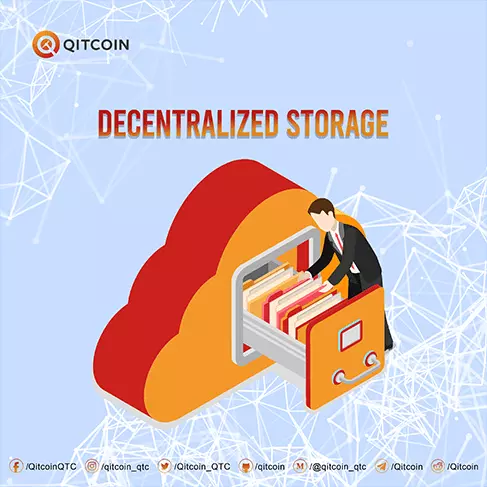
DECENTRALIZED STORAGE
Background
Over the last ten years, traditional cloud storage systems have grown in popularity as a viable alternative to storing data locally on a device or server. However, since data is processed internally, most often by multinational organizations, cloud computing has a number of drawbacks. As a result, they’re vulnerable to cyber-attacks and censorship on a territorial level. Furthermore, technological difficulties and downtime will result in a loss of productivity.
What is decentralization?
An unconventional approach that has been developed in the blockchain space provides another option: decentralized storage.
One of the most important underlying layers for a scalable decentralized web is its storage structure. Instead of storing all data in a single server, data in a shared storage structure is divided into chunks and stored in multiple nodes of a peer-to-peer (P2P) network. There have been a few popular distributed file-sharing programs in the past, such as BitTorrent and Napster. These applications, on the other hand, were not intended to be used as infrastructure. The benefit of using such storage is that it can do the same functions as a decentralized web (i.e., security, privacy, no single point of failure, cost-effective).
Many individual operators form a common storage network in decentralized storage networks, which share storage responsibilities.
Decentralization is the process of transferring power from a central government to a more decentralized and “liberal” structure. The idea has been around for a while, and a previous concept may be compared to the invention of the Internet, which democratized the spread of knowledge. Blockchain technology and implementations such as Bitcoin and Ethereum, which decentralize financial transactions and computational resources, are now being labelled with the word.
Structure
A decentralized storage structure can be built in a variety of ways. In general, they share a common emphasis on resiliency and efficiency.
While resiliency and efficiency are hallmarks of decentralized storage, there are a number of additional characteristics that an ideal storage system might offer: Accessible, Programmable, Content Addressing, Trustless, Verifiable and Open.
Reward
When it comes to decentralized storage longevity and reward structures, there are two kinds of mechanisms to consider. The first kind of longevity is one that is based on blockchain technology. Incentives must be built into the blockchain as well. The nodes are paying to link data to the following chains at mining time.
Contract-driven persistence is based on the idea that data cannot be stored indefinitely and must be maintained by contractual arrangements. There are arrangements reached between several nodes to retain a piece of data for a set amount of time. They must be refunded or renewed when they expire in order for the records to be preserved.
